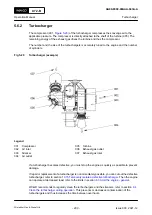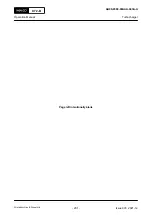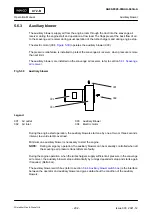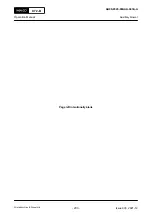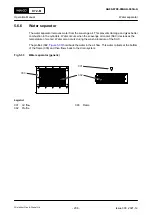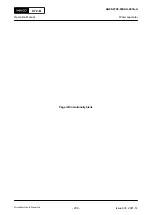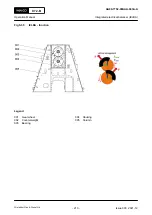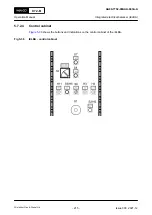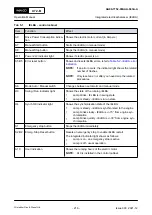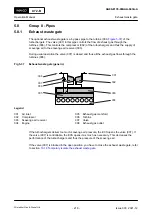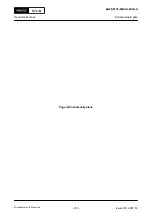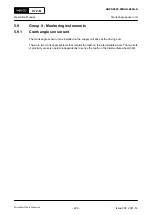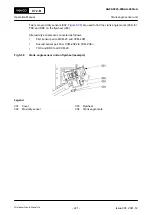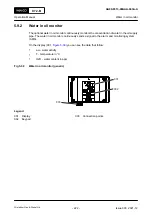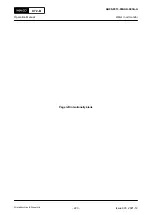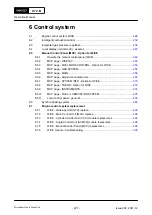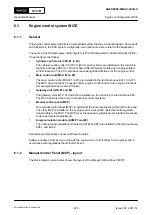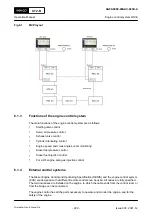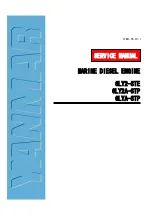
5.7.2.2
Control system
Each iELBA has two control cabinets (E38 and E39). The control system monitors the speed of
the electric motor and the rotating speeds and phases of the counterweights (002) and of the
flywheel of the engine. The control system also uses TDC and BDC data of piston #1 of the engine.
A frequency converter controls the electric motor.
When the iELBA is started, there are two states that are indicated on the control cabinet:
•
Swing state
The electric motor swings the counterweights back and forward some times until the
counterweights turn fully.
•
Run state
The iELBA has started to turn fully. The control system increases the speed of the iELBA
and synchronises it to the engine.
5.7.2.3
Operation
Usually the iELBA operates in the speed range of the engine of 65% to 105% of CMCR in the
AHEAD direction.
NOTE:
In heavy sea mode the iELBA does not operate.
The engine can also operate if one or the two balancers do not operate (eg in manual mode or if
a balancer is defective). Then it is possible that there are more vibrations on the hull.
When the power for the iELBA is set to ON, it takes some seconds to complete the initialisation
of the system.
The iELBA operates independently of the engine control system (ECS). The iELBA can be
operated in automatic mode or manual mode:
•
Automatic mode
In automatic mode the balancers operate as follows:
○
The iELBA starts if the engine speed is higher than the specified threshold value.
○
The iELBA stops if the engine speed is lower than the specified threshold value.
•
Manual mode
In manual mode the balancers operate at a specified speed. Use the manual mode for
troubleshooting only.
NOTE:
Use the manual mode only if system oil is available at correct pressure and flow
rate.
X72-B
AA00-7752-00AAA-043A-A
Operation Manual
Integrated electrical balancer (iELBA)
Winterthur Gas & Diesel Ltd.
- 214 -
Issue 003 2021-12

